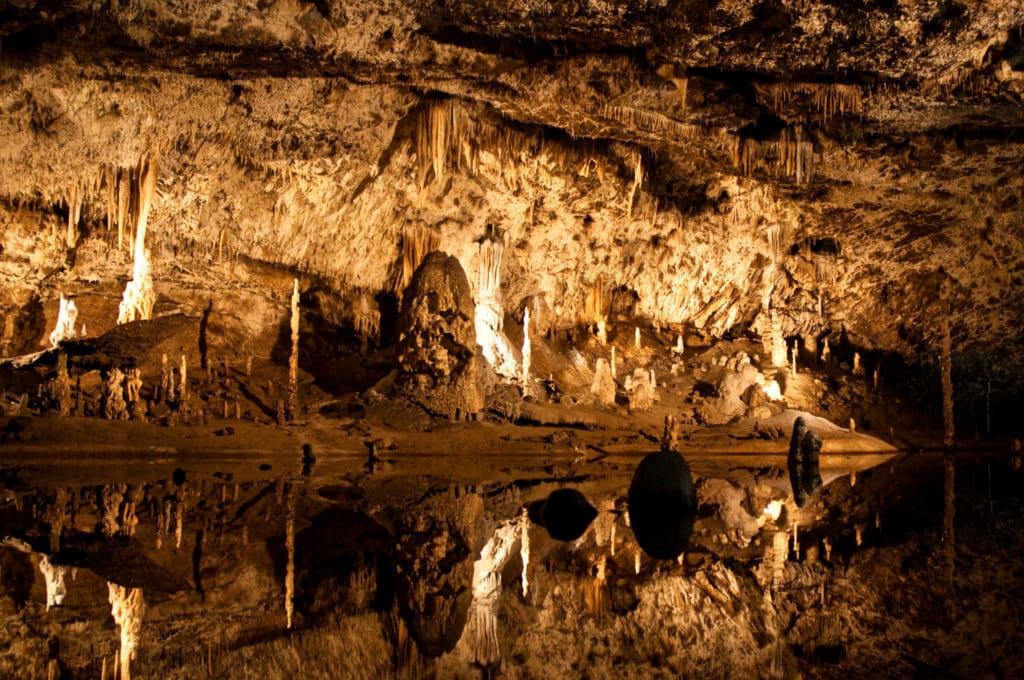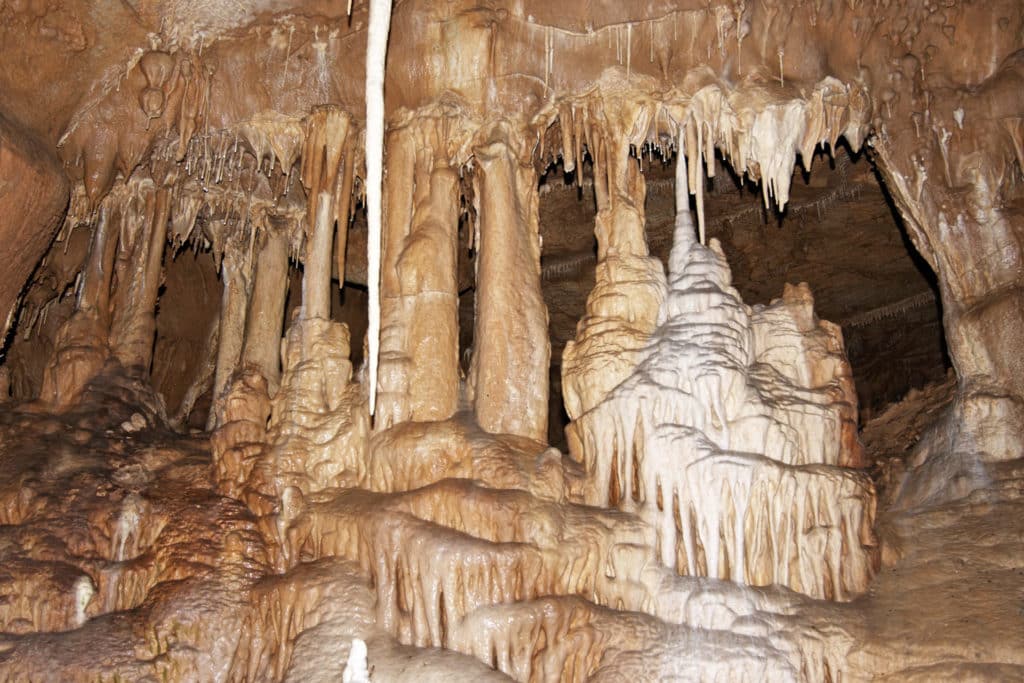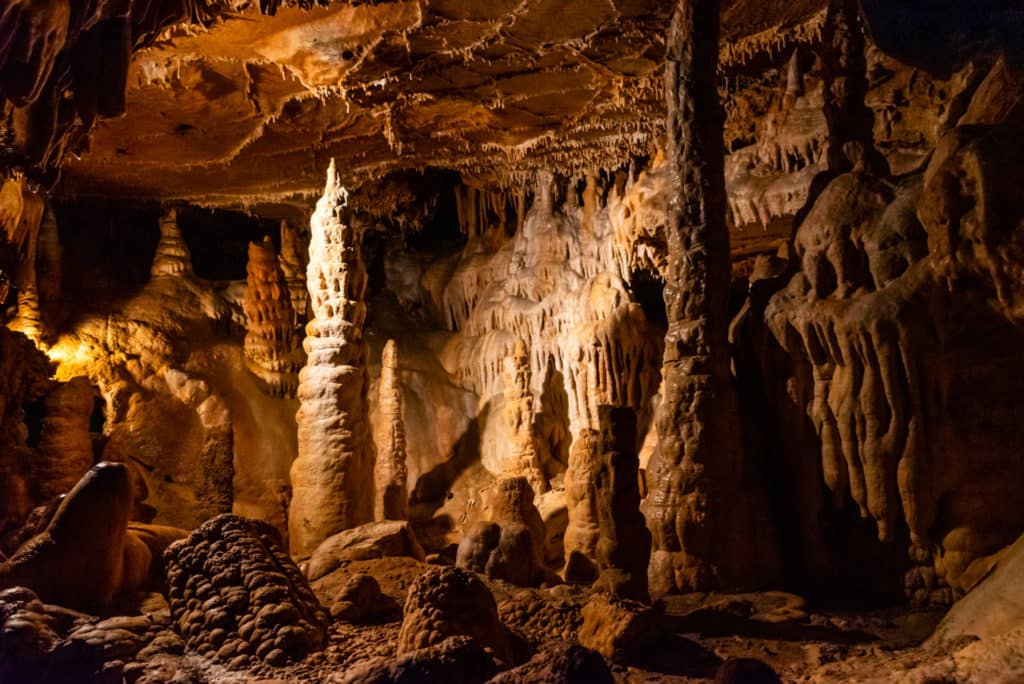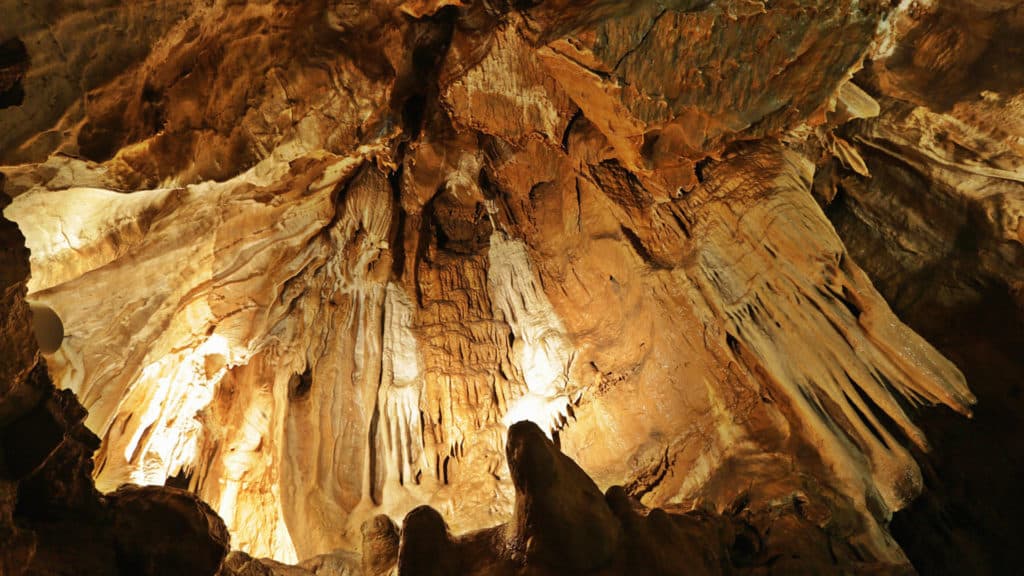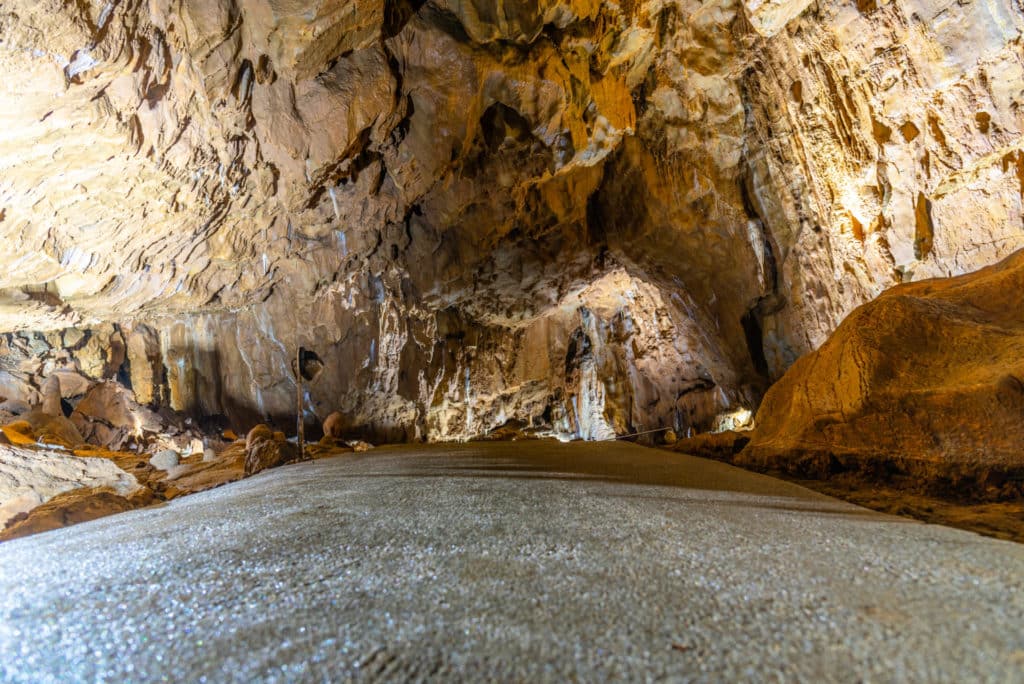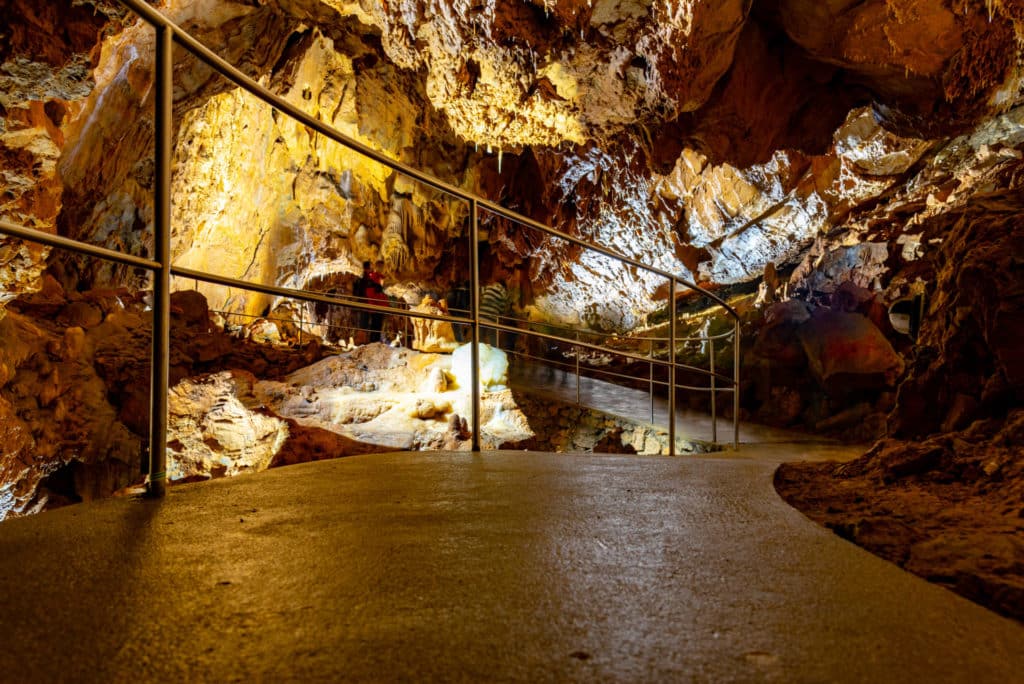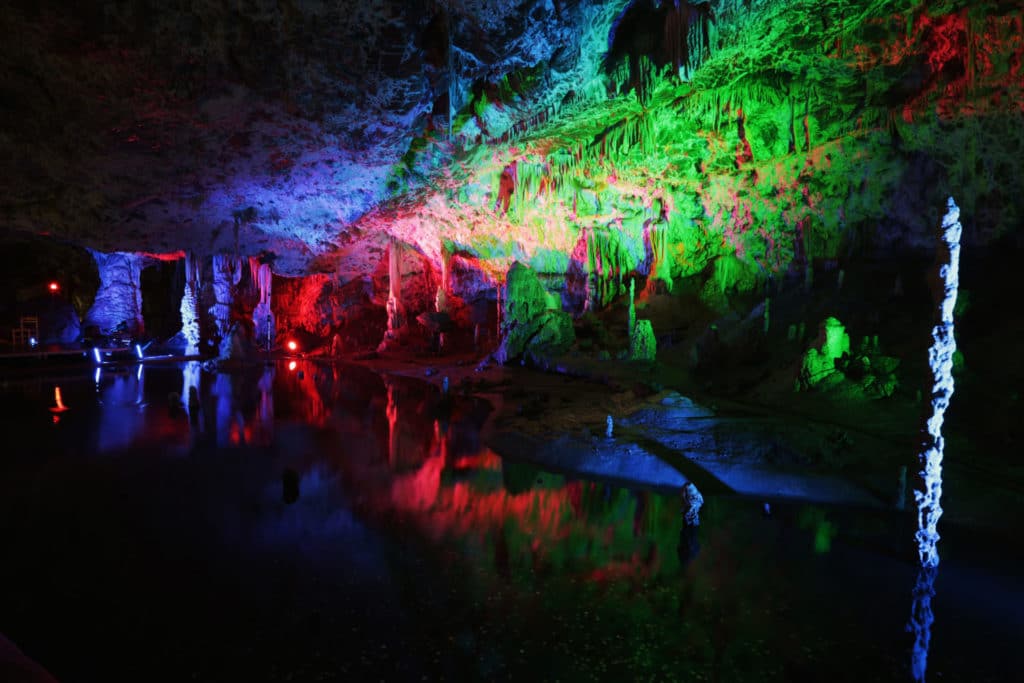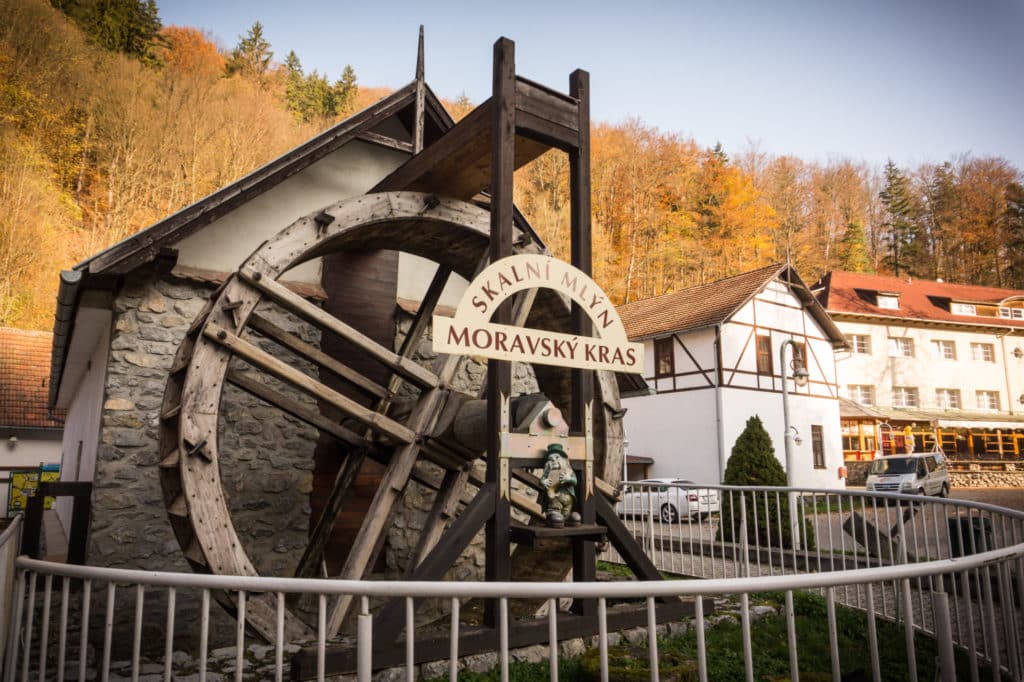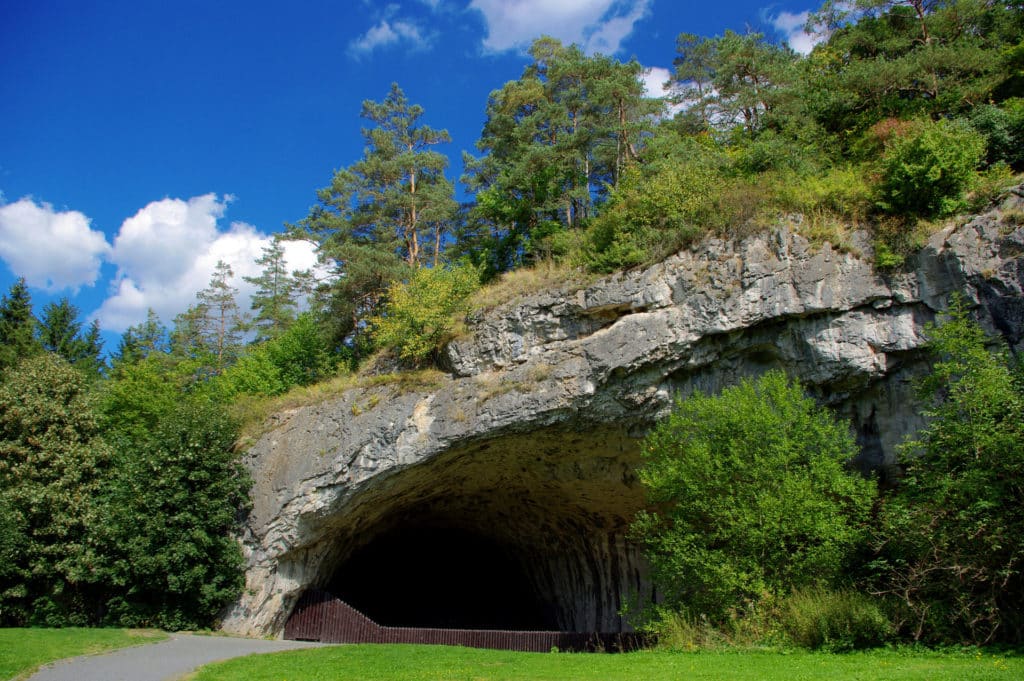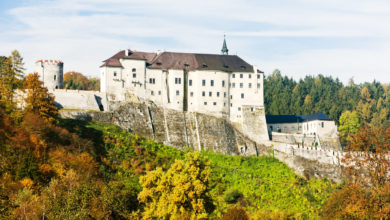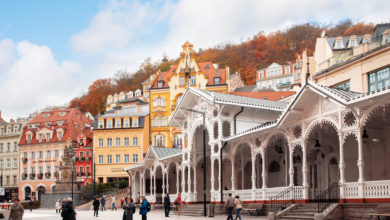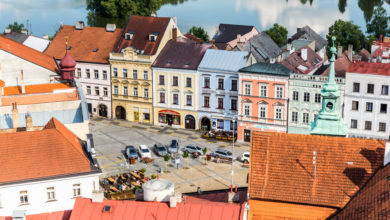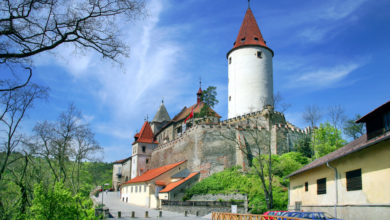Moravian Kras
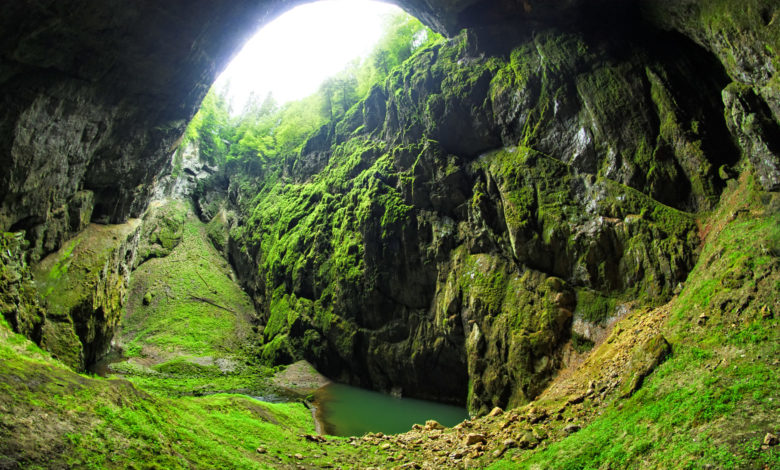
The best cave systems in the Czech Republic are northwards of Brno (the Moravian capital). Buses packed with kids and even senior citizens (the pure air is believed to be beneficial for asthma and allergies) take the guided tours throughout the cold limestone caves. This is a nice prospect during the warm summer months, but don’t forget to bring your jumper. Because this is a popular attraction during the summer, lengthy queues are to be expected.
As with similar regions elsewhere, throughout the Moravian Kras, the formations of karst result from rainwater on limestone rocks: the rock is dissolved by the water over millions of years, producing cracks that are then eroded further by the consistent flow. Fantastic cave networks and deep gorges frequently result. Water-rich in limestone that drips through the porous cave roofs often produces stalagmites and stalactites. The karst of Moravia is renowned for its’ rivers which repeatedly disappear and reappear. The word “karst” is derived from the German name for the limestone plateau close to Trieste.
The Moravian caves (Morayský Kras), consisting of a network of four hundred holes, is easily the most accessible and concentrated cave network in Czechia. Better visited on a day trip out of Brno, the limestone caves appeared more than three-hundred and fifty million years ago due to the erosive effect of acidic rainwater and underground water flows. Brno is within striking distance of all the Balcarka and Kateřinská, Sloupsko Šošůvské caves.
If you wish to do all of your caving in 1 go, the best idea is to visit the Punkevní jeskyně. This is the country’s biggest cave. The public can access some 3 kilometres of this cave’s twelve-kilometre length. Stalactite passages pave the way to the huge Macocha Abyss: 459 feet (140 metres) deep, and this appeared partly because of the ceiling collapse of the cave beneath. Then, the tour takes you along the narrow passageways via boat. This is an extremely up-close encounter: the passageways are hardly broad enough for boats, and a stalactite would probably stab you were you to stand up. Get there early during peak season because tours can be sold out by mid-morning. Reserving your place by telephone is an even better way of making sure you don’t miss out on this trendy cave tour because queues are often long. Also, it is possible to see the abyss rim separately.
On the 1 hour tour, which includes a boat trip alongside the underground Punkva river, tourists can expect to witness some great stalagmites and stalactites and to look in awe at the 1387 metre Macocha Abyss.
Should you wish to see the top view of the chasm, catch a cable car (purchase a ticket before going into the caves) up to the abyss’s crest, where there’s a restaurant.
The Kateňnská jeskyně (Katerinská caves) are far less crowded. These have an amazing assortment of stick stalagmites inside 2 large caverns (the tour lasts for half an hour). During summer, concerts are hosted in this fantastic setting. The Balcarka jeskyně (Balcarka caves), which are eastwards of the Macocha Abyss, are more compact, although they boast colourful stalagmites and stalactites (the tour lasts for forty-five minutes). Connected by domed galleries and chambers, the Sloupsko-Šošuvské caves, south of the Sloup hamlet, are the scariest. Lots of fossils have been found here and, during 1966, a Neanderthal man’s remains were discovered close by, along with pre-historic vestigial wall paintings.
Additional attractions can also be accessed by car quite easily. The spectacular Pernštejn Gothic castle is the most popular. Elsewhere, you could go and see the Slavkov (Austerlitz) battlefield from Napoleonic times, or Alfons Mucha Museum (shut January to May, November to December, Monday), which is located in the Zamek Moravský Krumlov cháteau from Renaissance times (www.mkrumlov.cz).
Caves in Moravia
Skalní mlyn; Opening times: Punkevní jeskyně January to March 08:40 to 14:00, Tuesdays to Sundays. April to June 10:00 to 15:50, Mondays, 08:20 to 15:50 Tuesdays to Sundays. July, August 10:00 to 17:00 each day. September 10:00 to 15.50 Mondays; 08:20 to 15:00 pm Tuesdays to Sundays. October 08:20 to 15:40 Tuesdays to Sundays. November, December 08:40 to 14:00 Tuesdays to Sundays. Additional caves open from February to October. (www.cavemk.cz)
Admission Charges
Punkevní jeskyně (including chair-lift to the entrance and boat ride) 100 CZK adults; 80 CZK reductions. Other caves 50 CZK adults; 20 CZK reductions.
Advice
To take a break from this subterranean wonderland, try the Moravian Karst wooded hills, which are easily explored along hiking trails.

